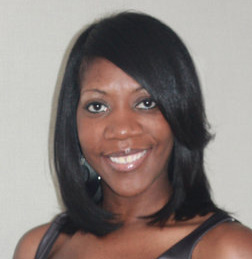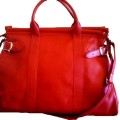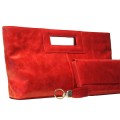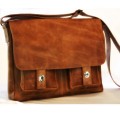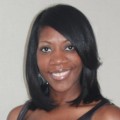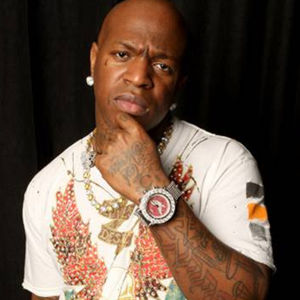If you think about the origin of the word purse, which is derived from the latin term pursa or bursa (Greek term for “bag”), the “little bag made of leather” clearly identifies with a new line of handbags called P. Sherrod & Co. The Atlanta-based company offers chic and classic designs that are appropriate for individuals who prefer a more conservative style handbag, but dares to make a statement through its South American inspired tropical colors and high quality leather. This co-ed line of bags are offered in various types: clutches, cross-body, travel totes, messenger bags, backpacks, etc. Also, smaller-sized trinkets are offered such as belts, key chains, business card holders, and wallets. So if you are looking for a changeless, sofisticated accessory to go along with a casual or business look, P. Sherrod & Co is the destination.
For most, the fashion industry consists of clothing designers, boutiques, models, and stylists. Rarely, do we hear of someone starting a handbag business. So STACKS Magazine recently sat down with the owner of P. Sherrod & Co., Donna King. The New Jersey native shared lots of insight on the company, the manufacturing/distribution business, being an entrepreneur, and the future plans for P. Sherrod & Co.
**********************************************************
What is P. Sherrod & Co.? How did it manifest?
DK: P. Sherrod & Company manifested itself out of nowhere. I do not have a background in fashion. I have a background in business and marketing. I went on a trip to South America visiting a friend of mine. It wasn’t any type of business aspiration…it was just a vacation. He and I were touring, walking around visiting different places. I came across a leather tanning company. It had sheets of leather, different colors. They were really popping colors. They were bright. They were unique to me…as a person who traditionally goes for the blacks and brown handbags. Seeing this leather was a rather unique experience for me. So, I walked away, didn’t really think too much about it. But I kept thinking a little about it in the background and I’ve always had an entrepreneurial spirit. I knew I always wanted to do something for myself. As you and I have talked about before, I have different organizations and companies that I’ve worked with and worked for and started. But I just saw something different in the leather that I came across and decided that there may be something there.
So I came back to the states, and my friend who lives over there, we got to talking and said let’s do something with that leather. The colors are very tropic colors…strong turquoise, strong orange, strong reds. I thought that would be a differentiating factor if we decided to get into business. So we did some research and that’s where it came from. No aspiration in fashion. Of course I love fashion…part of being a woman. But, no design background, no handbag background, no leather background. It kind of all manifested itself from visiting South America and being inspired.
How did you come up with the name P. Sherrod & Co?
DK: It is actually the name of the person I went to go visit in South America. I kind of liked it. It has a ring to it. So I played with his name a little bit and that’s how I came up with the name.
Who are you marketing your product to?
DK: I’m marketing to men and women between the ages of 25 to 55 years old. I’m considering doing a handbag line for kids. But right now our target market is 25 to 55. Not specifically an urban market. So, I’m branching out to handbag buyers. Women who love handbags. Men who love backpacks and messenger bags. We have a business line for professionals. So not necessarily chasing after the market of people who are in the line of Coach or Louis Vuitton, but those individuals who will spend a little bit more for quality and leather.
As far as the price range, what is the average price for a handbag?
DK: Our price point runs between, for a small clutch, about $80 and for the larger bags like leather carry-on’s or luggage pieces about $200-$250.
Were there other manufacturers in Columbia? Why were you sold on this particular leather?
DK: It wasn’t like I went to Columbia looking for leather. I went to Columbia and saw leather and was inspired by it. So of course at this point, I was like wow this leather is little different a little unique than other leathers I’ve seen in the past. I looked at some other manufacturers in China. I also looked at leather manufacturers in Africa. But, so far we are sticking with Columbian manufacturers. We have a good relationship with them in terms of the price points we have for manufacturing. It just works with our business model right now. So were going to stick with that and just play on that until something transitions.
DK: It’s almost different every day. That’s one of the perks of being an entrepreneur. You always experience something different. So one day or one week I might focus on a specific project (i.e. website). Or I might try to work with a particular model or fashion stylist. So it kind of varies depending on what project I need to focus on at that time. But of course, being an entrepreneur and being the sole owner of the company, I also have a silent partner that helps me with some of the financials [and it is good to have a “ghost” finance person], the day-to-day operation may vary. One day I may focus on finance. One day I might focus on marketing. One day I might focus on the website. One day it may be Facebook and Twitter. So it varies depending on the need of the business. Right now, I’m focused on increasing the number of boutiques I’m in. I’ve been hitting the floor, hitting the ground, going out trying to find different boutiques in the metro Atlanta area. I have two now that I’m in here in Atlanta. But I do want to expand to other major metropolitan cities as well. While I’m focusing on Atlanta, I’m also putting my fingers on New York, which I’m from New Jersey so that’s kind of easy for me. But, for New York and hopefully California sometime soon.
DK: Finding a manufacturer is probably one of the biggest challenges. I feel like we were fortunate that we ran up on a manufacturer who was looking to deal with someone in the states. Currently, my manufacturer doesn’t deal with anyone in the states. So, we’re trying to have some exclusive rights to what we are doing now with them. I know people who have their idea first and then go searching for manufacturers which can take a year or more to find that perfect manufacturer. So for us, a slight challenge is that over in South America a lot of people don’t speak English. I don’t speak fluent Spanish which is pretty hilarious. I’m working on it. I’m actually trying to take some courses so I can communicate with them better. But, Google is my best friend because they have Google Translator. So, we send a lot of emails back and forth through Google Translator. So that’s been extremely helpful. Once we get the design out, and they manufacturer the quantity…I have to tell you I am really fortunate with my manufacturer. A lot of manufacturers are like minimum number, 25, and a minimum amount of 5000. So because my manufacturer is new to working with people in the states, they are trying to get their manufacturing company over here. So it’s a win win situation for both of us.
In terms of distribution, you have to be really careful. Especially with Columbia…they have a lot of different regulations and rules that you have to follow. They have the scanners of course. You know Columbia has their drug paraphernalia [laughs]. So specific to the country you are manufacturing out of, I think China may be a little bit different because so many people import and export out of China. But Columbia we had a couple of challenges with taxes and all of those things you have to look up and pay attention to when you identify what country you’ll be distributing or importing and exporting out of. As far as distributing to boutiques that I’m in now, it’s kind of easy for me because I’m here in Atlanta. So getting them their products is pretty easy. But I’m sure as we grow and increase, and hopefully one day get into a major department store, those distribution needs and challenges will change drastically.
“The people that understand the concept of timelessness will appreciate a P. Sherrod bag.” – Donna King
You mentioned the language barrier, are there any other pros and cons with working with an international company?
DK: Definitely the language barrier…depending on the country. Transferring money and banking is completely different. Of course, the currency. The difference in currency…just those minor things that you just kind of have to get your hands around I’ve found to be slight challenges. But those are the only ones I’ve experienced so far. The only other thing is you’ll have to spend some money traveling there to get on the same page as your manufacturer. I’ve had a couple of things that came to me and they weren’t quite exactly what I was looking for. So getting that back and paying for that to go back…that can be kind of challenging. Everyone now is on that “Made in America” kick which is awesome because we need to keep stuff here to help build up our economy. But, things that are made here are taking priority in terms of getting funding and things like that. So those are a couple of other challenges I think are relevant.
In comparison to the national brands and designers, like Kenneth Cole or Cole Haan, what makes your product unique?
DK: Like I mentioned to you before, I think people are always looking for the next hottest thing. Right now, I think what our customers appreciate most about our product is that it does have some uniqueness in terms of color. We do have pops of color like turquoise and orange and things like that. Like one of our signature bags, the Stella Glam, it comes in a variety of colors. What’s different about our handbags too is that in terms of design we are really inspired by the 20s and 30s, kind of like…just classic, sleek bags… not a lot of bells and whistles…that 10 years from now you can pull it out of your closet and it will still be a classic bag. We want them to look classic and sheek and sleek…really a timeless piece that you can use for a long time. So that’s another unique aspect of our bags…they won’t go out of style.
How has been the feedback?
DK: Feedback has been great. There’s a particular type of person that understands the concept of the bag. Those people understand it, they get it, they like it. I’ve had some great experiences with people that are interested in getting more information about the bags and getting the bags into their stores. We did a photo shoot with Tatyana Ali in Upscale Magazine and she was carrying one of the bags, which was a really great hit for us. Recently, Atlanta Magazine took a couple of our bags so hopefully they will be featured in the August edition.
What are some tools you use for marketing?
DK: Definitely social networking. It can be a little overwhelming when you’re trying to update it. Until I can find that tool that can take care of it all for me, I’m struggling with the updates for Facebook and Twitter. But, those are just two networking tools I’m using that have been really good for P. Sherrod & Company . We have close to 1500 Facebook fans and we are working to build our Twitter followers. So in terms of social networking that’s been great.
Public Relations…I’m trying to find a PR person. But it’s been pretty good, like I said with Upscale and Atlanta Magazine, just getting the name out there and calling on stylists. In terms of the fashion industry, contacting stylists, they are the key to getting you to where you need to be, especially if they have that “in” with a particular celebrity or magazine. So, definitely working with them. And then, just trying to come up with different unique promotional ideas that will capture people’s attention. Also, doing shows and going to different shows. I’m going to the Atlanta Apparel Mart in August. So doing those types of shows helps get your name out there and branding yourself.
What does the future hold for P. Sherrod & Company?
DK: I would love to get into a major department store. That would be a great hit for P. Sherrod & Company. I recently went to Savoy Magazine’s conference, here in Atlanta, and I met a woman from Macy’s. She is the person behind… it’s called the Macy’s Workshop, which is a program for up-n-coming designers and people in fashion who are aspiring to get into Macy’s. So it’s like a plan to assist you. For people to be inspired by the fact they can potentially get in there and know that it is not impossible to get into Macy’s. So, connecting with her was awesome. Her recommendation, which I’ll share with people that are interested, is that establish who you are as a brand, determine who your client is and who your customer base is, know your finances and your numbers because at the end of the day that’s what is most important to the major department stores. So that’s what we are aspiring to be is in a major department store. Hopefully, a recognizable brand that people can look at it and say, “hey that’s P. Sherrod” and you can point it out when you look at it.
- Carrie B. = $225
- Stella Glam = $99
- Mayor Messenger Bag = $110

